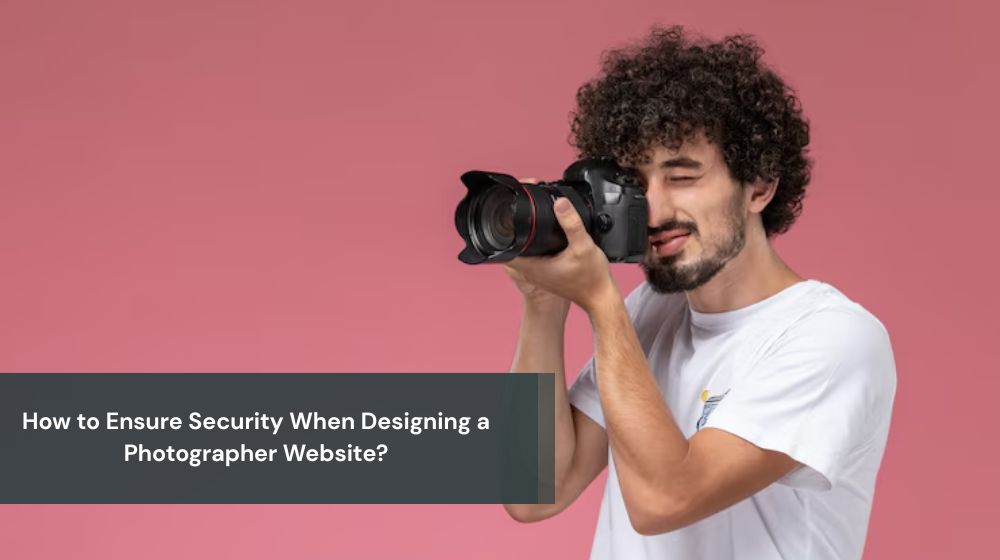Table of Contents
- Why Is a Website Important for Photographers?
- What Information Should a Photographer’s Website Include?
- Why Is a Mobile-Compatible Photographer’s Website Important?
- What Should Be Considered When Designing a Website for Photographers?
- Why Is SEO Important for Photographer Websites?
- How Important Is a Photo and Video Gallery on a Photographer’s Website?
- How Is Security Ensured When Designing a Photographer’s Website?
- How Should Client Testimonials and Reviews Be Displayed on a Photographer’s Website?
Why Is a Website Important for Photographers?
A website is a critical tool for photographers, serving as a digital portfolio and a platform to showcase their professional identity online. Here are some reasons why it’s important:
Visibility and Reputation: A well-designed website showcases a photographer’s work to a wide audience, enhancing their exposure and reputation, and creating opportunities to connect with new clients.
Professional Image: A website reflects a photographer’s professional identity and highlights their quality. A regularly updated, aesthetically appealing site instills confidence in potential clients.
Portfolio Showcase: Photographers can display their work through an organized portfolio, offering clients a visually engaging experience and a clear view of their capabilities.
Communication and Engagement: A website allows clients to easily contact the photographer or book appointments, fostering interaction and increasing business opportunities.
Marketing Tools: Integrated with social media, blogs, and other channels, a website serves as a platform to reach the target audience and promote services effectively.
A website strengthens a photographer’s digital presence and is vital for expanding and growing their business, making it an essential tool for success.
What Information Should a Photographer’s Website Include?
A photographer’s website is key to establishing a professional presence and effectively showcasing services to potential clients. It builds trust and transparency while highlighting artistic skills. Essential information to include:
Portfolio: A dedicated section showcasing past work and projects, demonstrating the photographer’s style and expertise to potential clients.
About Page: A page detailing the photographer’s background, specialties, and personal story, fostering a connection with clients.
Services and Packages: A section outlining offered services and pricing, helping clients understand what to expect.
Contact Information: A contact form and email address to ensure clients can easily reach out.
Blog or News Section: A blog or news area for sharing new projects, industry updates, or photography tips, keeping the site fresh and engaging.
Testimonials and Reviews: Client feedback to build trust, showcasing positive experiences and encouraging new clients to engage.
Including these elements creates a trustworthy and effective website that showcases a photographer’s talents and attracts clients.
Why Is a Mobile-Compatible Photographer’s Website Important?
A mobile-compatible photographer’s website is increasingly vital due to changing internet usage trends, with more people accessing sites via mobile devices. Here’s why it matters:
User-Friendly Experience: Mobile-compatible sites ensure seamless access from any device, providing a smooth, user-friendly experience for potential clients.
Google Search Rankings: Google prioritizes mobile-friendly websites, ranking them higher in search results, which boosts visibility and attracts more clients.
Professional Image: A mobile-compatible site underscores a photographer’s expertise and modernity, signaling to clients that they offer up-to-date services.
Mobile E-Commerce Opportunities: For photographers selling albums or products, a mobile-compatible site enables easy mobile transactions, enhancing sales potential.
Competitive Advantage: Many photographers may not yet have mobile-friendly sites. A mobile-compatible website sets you apart, attracting more clients.
A mobile-compatible website is essential for client engagement and business growth, offering accessibility and convenience anytime, anywhere.

What Should Be Considered When Designing a Website for Photographers?
Several key factors should be considered when designing a photographer’s website:
Visual Content: High-quality, striking visuals are central, showcasing the photographer’s talent and captivating potential clients.
User Experience: A user-friendly site with simple, clear navigation helps visitors explore the photographer’s work effortlessly, including on mobile devices.
Fast Loading Times: Quick load times are critical, especially for image-heavy sites, to prevent visitors from leaving due to delays.
SEO-Friendly Design: Optimizing for search engines with relevant keywords, meta descriptions, and proper heading tags increases discoverability.
Contact Information: Clearly listed contact details, such as phone, email, and a contact form, make it easy for clients to connect.
Testimonials and Reviews: Displaying client feedback builds credibility and trust, encouraging engagement.
Regular Updates: Keeping the site fresh with new projects ensures repeat visits, maintaining client interest and expanding reach.
By addressing these factors, a professional and impactful online presence can be created, enhancing a photographer’s visibility and appeal.
Why Is SEO Important for Photographer Websites?
SEO (Search Engine Optimization) is crucial for photographer websites, enhancing online visibility and connecting with potential clients. Given the visual nature of their work, ranking high in search engines is key. Here’s why:
Visibility and Engagement: Effective SEO elevates search rankings, driving more traffic to the website and increasing client exposure.
Targeted Traffic: SEO targets specific keywords and regions, attracting clients who are actively seeking relevant photography services.
Trust and Credibility: Higher-ranked sites are perceived as more trustworthy, increasing the likelihood of client engagement.
Competitive Advantage: In a crowded industry, SEO helps photographers outshine competitors, capturing more client interest.
Local Business Relevance: SEO boosts local search rankings, connecting photographers with nearby clients seeking their services.
Cost-Effectiveness: Compared to other marketing methods, SEO offers a cost-efficient way to reach clients with a strong long-term return on investment.
SEO is indispensable for photographer websites, promoting services, expanding clientele, and staying ahead in a competitive market.
How Important Is a Photo and Video Gallery on a Photographer’s Website?
A photo and video gallery is vital for a photographer’s website, providing a platform to showcase their work and portfolio. Here’s why it’s significant:
Visual Presentation: As visual artists, photographers must display their best work to demonstrate expertise. A gallery highlights their style and quality to potential clients.
Engagement Boost: Stunning visuals captivate visitors, encouraging longer site visits and sparking client interest.
Portfolio Development: A gallery builds a comprehensive portfolio, illustrating diverse styles and expertise across various photography genres.
Client Trust: Displaying past projects reassures clients of the photographer’s skills, building confidence in their services.
Shareable Content: Galleries provide content for social media, enabling clients to share favorite images and expanding the photographer’s reach.
A photo and video gallery is a cornerstone of a photographer’s website, effectively showcasing talent, engaging clients, and fostering trust through visual storytelling.

How Is Security Ensured When Designing a Photographer’s Website?
Security is critical when designing a photographer’s website to protect visitor and site data. Here are key measures to ensure security:
SSL Certificate: An SSL (Secure Sockets Layer) certificate encrypts data, securing communications and displaying “https” in the address bar, boosting visitor trust.
Strong Password Policies: Enforce complex passwords with a mix of letters, numbers, and symbols to prevent unauthorized access.
Updated Software and Plugins: Keep all software and plugins current to patch vulnerabilities and protect against attacks.
Firewall Implementation: A firewall filters incoming traffic, blocking malicious requests and adding a security layer.
Data Backups: Regular backups prevent data loss and enable quick recovery in case of an attack.
Access Controls: Restrict admin panel access to authorized users through defined roles and permissions.
Security Testing: Conduct regular penetration tests and vulnerability scans to identify and fix potential risks.
These steps enhance a photographer’s website security, ensuring reliability and protecting both the business and its clients.
How Should Client Testimonials and Reviews Be Displayed on a Photographer’s Website?
Client testimonials and reviews on a photographer’s website build trust and showcase expertise. Effective display methods include:
Dedicated Testimonials Page: Create a separate “Testimonials” or “Reviews” page to feature authentic client feedback and experiences.
Gallery Integration: Include testimonials beneath photos in the gallery, linking specific images to client comments for added impact.
Slider or Carousel: Use a slider or carousel on the homepage or key pages to rotate testimonials, drawing visitor attention and enhancing credibility.
Visual Enhancements: Pair testimonials with visuals, like client photos, to make them more engaging and relatable.
Social Media Integration: Embed social media feedback directly onto the website, automatically showcasing reviews from platforms to boost authenticity.
Displaying testimonials and reviews prominently and authentically builds trust, encourages engagement, and supports potential clients’ decisions to work with the photographer.


